Monument Park (Fort Lee) New Jersey
Introduction
Text-to-speech Audio
Images
Photograph of the George Washington Historical Marker at Monument Park.
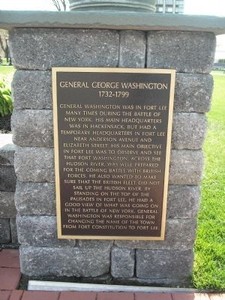
Photograph of the Soldiers of the American Revolution Monument in Monument Park.
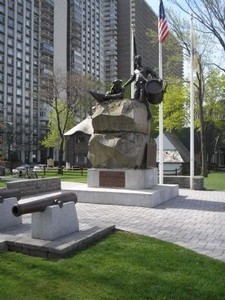
Photograph of the General Henry Knox Historical Marker.
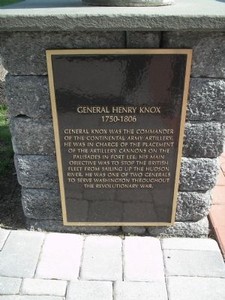
Photograph of the General Horatio Gates Historical Marker.
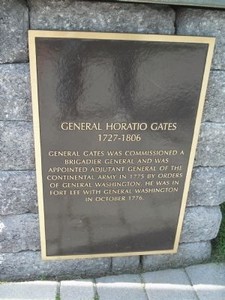
Photograph of the General Horatio Gates Historical Marker.
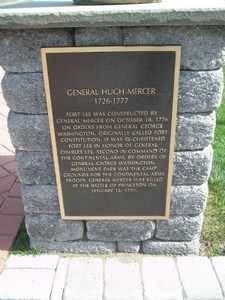
Photograph of the General Nathaniel Greene Historical Marker.
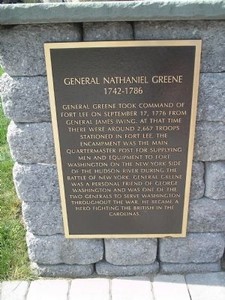
Photograph of the John "Black Jack" Pershing Historical Marker.
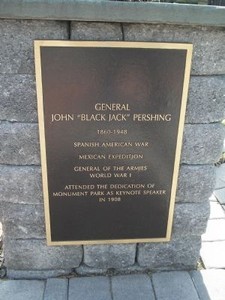
Photograph of the Liberty Tree Memorial Historical Marker.
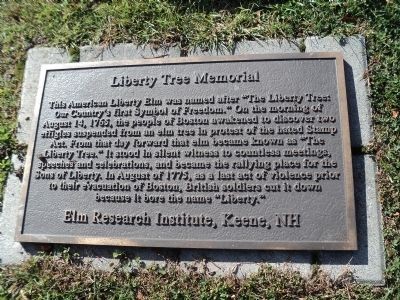
Photograph of the Liberty Tree Memorial Historical Marker and tree.
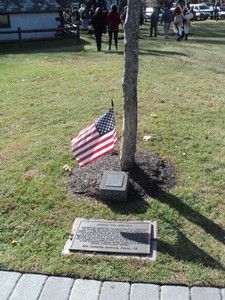
Photograph of the Old Army Road Historical Marker.
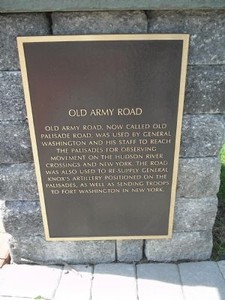
Photograph of the Thomas Paine Historical Marker.
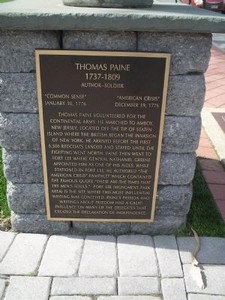
Backstory and Context
Text-to-speech Audio
Monument Park was dedicated by the Daughters of the American Revolution in 1908 and is the only park dedicated to American Revolutions soldiers. A 727 acre park, Monument Park was part of Fort Constitution of the Continental Army under George Washington. More than 2,600 troops were stationed in the area during the American revolution.
After stopping a British siege in Boston, Massachusetts in 1776, General George Washington wanted to defend New York City and the Hudson River Valley. The British intended to control the Hudson River to brings its Royal Navy in to split the Colonies and end the rebellion. In 1776, soldiers fortified a site called Fort Constitution, which would be renamed Fort Lee to honor General Charles Lee. Lee achieved a victory in Charleston, South Carolina. Opposite of Fort Lee was Fort Washington. The British brought the Rose and the Phoenix, two ships, into the Hudson River. Since firing from Fort Washington did little to halt the ships, work continued faster on Fort Lee.
The British continued to encroach on American territory, taking New York City and Manhattan. In November 1776, the British also took Fort Washington and captured 3,000 American troops. After losing Fort Washington, Washington ordered the commander of Fort Lee, Nathaniel Greene, to evacuate. George Washington heard that the British army was advancing and ordered an immediate retreat of Fort Lee, leaving supplies and artillery behind.
Historical Markers Found in Monument Park
Monument Park has numerous historical markers. The Palisade Avenue entrance of Monument Park has a historical marker dedicated to George Washington's time at Fort Lee and a historical marker for General Hugh Mercer who constructed Fort Lee on October 18, 1776. General Nathaniel Greene, commander of Fort Lee, and John "Black Jack" Pershing who was the keynote speaker at the 1908 dedication of Monument Park also have historical markers at the Palisade Avenue entrance. Palisade Avenue also has a monument dedicated to the Soldiers of the American Revolution.
The Parker Avenue southern entrance to Monument Park has a historical marker for General Henry Knox, Commander of the Continental Army Artillery. Also on the southern entrance a historical marker for General Horatio Gates, Brigadier General and Adjutant General of the Continental Army.
Parker Avenue has the Liberty Tree Memorial historical marker and tree. The original "Liberty Tree" in Boston, Massachusetts had effigies in protest of the Stamp Act. It was the rallying place for the Sons of Liberty until British soldiers cut it down in 1775. The Liberty Tree in Monument Park was planted by the Fort Lee Common Sense Society on the Bicentennial of Thomas Paine's death on June 8, 2009. The tree was planted where Thomas Paine wrote "The American Crisis" in 1776. Also on the corner of Parker Avenue and Angioletti Place are historical markers for Old Army Road, the original name for Palisade Road, and Thomas Paine who was a volunteer in the Continental Army and authored "The American Crisis" while at Fort Lee. Paine wrote "The American Crisis" to unite by colonies by exposing the British and to gain support of the Loyalists.
Sources
Monument Park, Fort Lee, New Jersey. Accessed January 2nd 2020. https://www.fortleenj.org/facilities/facility/details/Monument-Park-15.
Coughlin, Bill. General George Washington, The Historical Marker Database. November 24th 2019. Accessed January 3rd 2020. https://www.hmdb.org/m.asp?m=7647.
Coughlin, Bill. General Henry Knox, The Historical Marker Database. November 24th 2019. Accessed January 3rd 2020. https://www.hmdb.org/m.asp?m=7650.
Coughlin, Bill. General Horatio Gates, The Historical Marker Database. November 24th 2019. Accessed January 3rd 2020. https://www.hmdb.org/m.asp?m=7652.
Coughlin, Bill. General Hugh Mercer, The Historical Marker Database. November 24th 2019. Accessed January 3rd 2020. https://www.hmdb.org/m.asp?m=7653.
Coughlin, Bill. General Nathaniel Greene, The Historical Marker Database. November 24th 2019. Accessed January 3rd 2020. https://www.hmdb.org/m.asp?m=7648.
Coughlin, Bill. General John "Black Jack" Pershing, The Historical Marker Database. November 24th 2019. Accessed January 3rd 2020. https://www.hmdb.org/m.asp?m=7656.
Coughlin, Bill . Liberty Tree Memorial, The Historical Marker. November 24th 2019. Accessed January 3rd 2020. https://www.hmdb.org/m.asp?m=70392.
Coughlin, Bill. Old Army Road, The Historical Marker Database. November 24th 2019. Accessed January 3rd 2020. https://www.hmdb.org/m.asp?m=7658.
Coughlin, Bill . Thomas Paine, The Historical Marker Database. November 24th 2019. Accessed January 3rd 2020. https://www.hmdb.org/m.asp?m=7655.
Fort Lee Historic Park, Palisades Interstate Park Commission. Accessed January 3rd 2020. https://www.njpalisades.org/fortlee.html.
DeStefano, Richard. Thomas Paine's The Crisis Number One 1776 - Richard DeStefano, American History. Accessed January 3rd 2020. http://www.let.rug.nl/usa/essays/before-1800/thomas-paines-the-crisis-number-one-1776-richard-destefano.php.
Image courtesy of Bill Coughlin at the Historical Marker Database.
Image courtesy of Bill Coughlin at the Historical Marker Database.
Image courtesy of Bill Coughlin at the Historical Marker Database.
Image courtesy of Bill Coughlin at the Historical Marker Database.
Image courtesy of Bill Coughlin at the Historical Marker Database.
Image courtesy of Bill Coughlin at the Historical Marker Database.
Image courtesy of Bill Coughlin at the Historical Marker Database.
Image courtesy of Bill Coughlin at the Historical Marker Database.
Image courtesy of Bill Coughlin at the Historical Marker Database.
Image courtesy of Bill Coughlin at the Historical Marker Database.
Image courtesy of Bill Coughlin at the Historical Marker Database.
